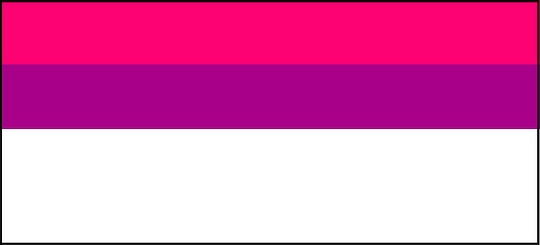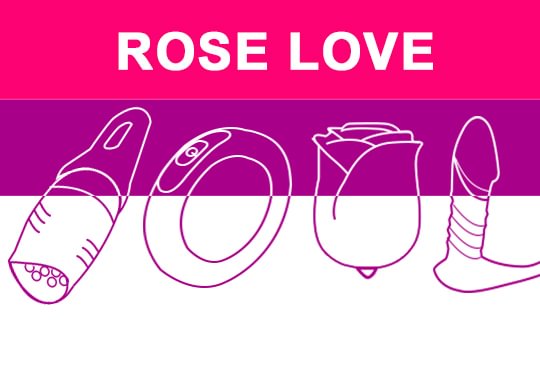
What Is the Sembisexuality?
Share
IS BEING SEMIBISEXUAL A JOKE, OR IS IT REAL?
Confusion abounds as social media users grapple with the term "semibisexual." With its contradictory definition, many are questioning the authenticity of this new word. For those who have encountered "semibisexual" and are seeking clarity, here is a comprehensive guide to understanding its meaning.
WHAT DOES SEMIBISEXUAL MEAN?
Semibisexuality refers to a sexual orientation where individuals are attracted to only one gender, typically the opposite, yet still identify as bisexual.
Alternatively, semibisexuality can also describe individuals who experience sexual attraction towards two genders but only form romantic connections with one. In this context, semibisexuality aligns with the split attraction model, which recognizes that romantic and sexual attraction can be distinct experiences.
Urban Dictionary defines semibisexual as individuals who are "75% attracted to the other gender and 25% attracted to their own." The term gained popularity on social media in 2018 and first emerged on Reddit in 2019.
IS THERE A SEMIBISEXUAL FLAG?
The semibisexual flag incorporates red, purple, and white, resembling the bisexual flag but substituting the blue stripe with white. The origin and symbolism behind the semibisexual flag remain a mystery, as the creator is unknown and no official explanation for the chosen colors has been published.

THE SEMIBISEXUAL MEME, EXPLAINED
Due to its perplexing and contradictory definition, semibisexuality has become a subject of mockery and memes on social media. Many individuals view the term as a joke, using it to sarcastically imply, "I'm straight, but I want to be seen as unique or special."
CONTROVERSY OVER SEMIBISEXUALITY
The concept of semibisexuality has ignited significant controversy, with critics accusing those who identify as such as attention seekers, appropriating queer identities while still identifying as straight or appearing straight.
Within the bisexual community, some individuals view the term as demeaning and discriminatory. They argue that semibisexuality contributes to bi-erasure by assuming that bisexual individuals experience equal levels of attraction towards all genders. In reality, bisexual individuals may experience varying degrees of attraction, and it is not always an even split.
However, it is important to acknowledge that it is entirely valid to primarily identify as heterosexual while occasionally experiencing attraction to individuals of the same gender. This is commonly referred to as "heteroflexibility."
HETEROFLEXIBLE VS BISEXUAL
The experience of being semibisexual can be likened to that of being heteroflexible. Approximately 15% of Americans identify as heteroflexible, although individual experiences may differ.
While heteroflexibility can sometimes align with the definition of bisexuality, it is not the case for everyone. Some individuals may choose to identify as heteroflexible instead of bisexual because:
- They are still unsure about their sexual preferences.
- They don’t feel confident using the term bisexual.
- They feel more heterosexual than homosexual.
HOW TO KNOW IF YOU’RE HETEROFLEXIBLE OR BISEXUAL
If you find yourself somewhat relating to the term "semibisexual," you may be questioning whether you identify as heteroflexible or bisexual. Here are a few methods to determine which term aligns more accurately with your experiences.
ASK YOURSELF QUESTIONS
Engaging in self-reflection and considering the following inquiries can assist in discerning whether one identifies as bisexual or heteroflexible:
- Who do I find myself primarily attracted to?
- Do I experience romantic attraction exclusively towards individuals of the opposite gender, but feel open to exploring sexual encounters with individuals of the same gender?
- Do I sense a desire to explore romantic or sexual connections with individuals of the same gender that I feel I might be missing out on?
- Which term, "heteroflexible" or "bisexual," do I feel more comfortable using to describe my identity?
USE THE KINSEY SCALE
While there isn't a definitive test to determine whether someone is heteroflexible or bisexual, utilizing the Kinsey Scale can provide some perspective. The Kinsey Scale, also known as the Heterosexual-Homosexual Rating Scale, offers a way to describe an individual's sexual orientation at a given time.
The Kinsey Scale ranges from 0 to 6, where 0 represents exclusive heterosexuality and 6 represents exclusive homosexuality. Many bisexual individuals may identify with a score of 3, indicating an equal level of attraction or behavior towards both genders.
Conversely, someone who is heteroflexible may score a 1 (predominantly heterosexual with a slight inclination towards the same gender) or 2 (mostly heterosexual with a moderate inclination towards the same gender).
It's important to recognize that the Kinsey Scale has limitations, as it doesn't encompass all sexual orientations (such as pansexuality) and operates on binary principles. However, it can serve as a basic tool to gauge one's sexual orientation.
HOW TO USE LGBTQ TERMS RESPONSIBLY
There is a wide range of terms available to describe gender identity and sexuality. However, it is important to understand the appropriate usage and proper understanding of these terms. Here are a few guidelines to consider:
DO YOUR RESEARCH
If you are unfamiliar with the meaning of a particular term, you can consult an online LGBTQ glossary for reference. Here are a few useful glossaries to consider:
Glossary of Terms by the Human Rights Campaign
LGBTQ Glossary by John Hopkins University
LGBTQIA Resource Center Glossary by UC Davis
LGBTQ Terms and Definitions by the University of Florida
ASK SOMEONE WITHIN THE COMMUNITY
When engaging in conversation with someone and you are uncertain about their gender identity or sexual orientation, it is best to ask them which terminology they prefer. By doing so, you demonstrate respect and value their input, rather than making assumptions. Additionally, you can inquire about their pronouns and their unique experiences related to their gender identity or orientation.
It is crucial to remember that you cannot determine how someone identifies solely based on their appearance or speech. If you happen to address someone incorrectly, it is important to take responsibility for your mistake, learn from it, and remain open to receiving feedback.
UNDERSTAND THAT GENDER IDENTITY AND SEXUAL ORIENTATION CAN CHANGE
Gender identity and sexuality can be fluid, which means it's not uncommon for someone who previously identified as bisexual to now identify as straight or gay (or vice versa). It's essential to understand that a change in someone's identity does not invalidate their previous identity. It's normal for individuals to experience confusion and undergo changes in their understanding of themselves.
THE BOTTOM LINE
Although the term "semibisexual" may be used by some individuals to describe their experiences, it is important to note that it is a controversial term and not widely accepted within the LGBTQ community. This term can be seen as invalidating the bisexual experience by suggesting that bisexual individuals do not experience varying levels of attraction to different genders.
When using new LGBTQ-related terminology, it is crucial to thoroughly understand the context in which they are used. Conducting research and engaging in conversations with members of the LGBTQ community can help prevent the invalidation of someone's experiences or the misuse of terminology. If you are unsure about how to address someone, the best approach is to ask for their preferred terms and respectful language.
For more, visit https://www.sexshop2u.com/
